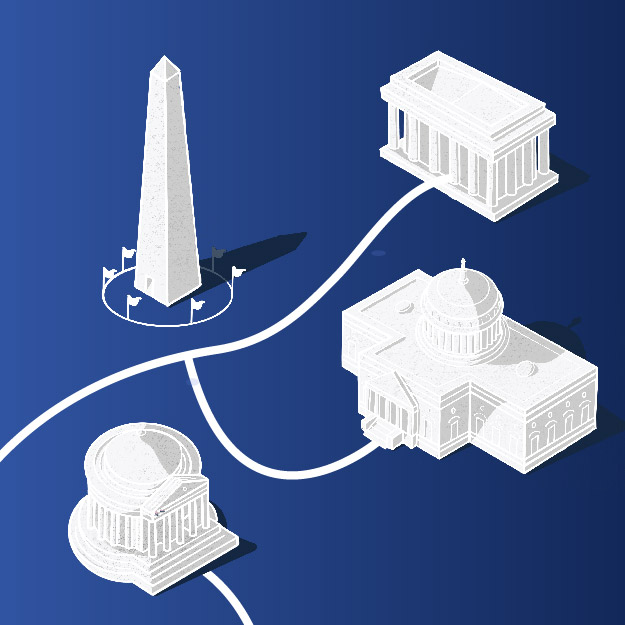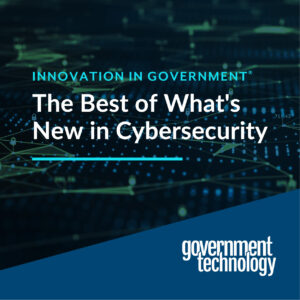The federal government funds about 22% of US research and development (R&D), with $708 billion spent in 2020 alone.
It’s an enormous — and critical— expense, driving innovation across dozens of industries, economic growth, breakthroughs, and even scientific discoveries. And the effective exchange of ideas between researchers across academic fields and disciplines is what makes it all possible.
Research areas like renewable energy, national defense, transportation, communication, and the environment are intrinsic to US security and prosperity. That leaves no time for outdated software, poor R&D collaboration practices and unreliable budget allocations.

You need real-time, secure collaboration inside and outside organizations — across research teams, universities and industries. With the Content Cloud, federal agencies get a secure, digital content platform to share and edit documents, presentations, spreadsheets and other unstructured content in real time. Box brings teams together – both inside and outside the agency – with a secure content layer for unstructured data across every application.
Moving beyond storage solutions to a content platform
Many agencies are in different stages of their cloud journey and use different technologies such as Microsoft Office 365, Google, or single task software applications to perform similar tasks. Researchers, when faced with ineffective tools, often download unsanctioned file-sharing collaboration platforms to compensate in order to get their jobs done.
Box gives you a standardized platform to streamline and secure file sharing and settle on a true content strategy. With end users in mind, Box creates a seamless, easy-to-use environment that deploys quickly, so teams achieve their missions
Secure external collaboration
Before Box, teams lacked secure, compliant, and intuitive content collaboration tools. Agency employees resorted to legacy file transfer protocol (FTP) sites, email, USB, and other unsecured tools to share information.
That’s all changing. Box holds strong partnerships in the National Lab community to foster a productive R&D environment through a secure, user-friendly, standardized and governed platform. Working with organizations like the National Security Agency (NSA), the National Institute of Health (NIH), the Food and Drug Administration (FDA), NASA, the Department of Veterans Affairs (VA), and the Department of Defense (DoD), Box has improved workflows, created custom portals, streamlined external collaboration, and provided built-in, e-signature capabilities.
Securely connect your content across 1,500+ apps
For agency administrators, Box brings real-time control and visibility to the back end for auditing and reporting on all actions across the enterprise for IT organizations. Box comes standard with over 1,500 integrations, connectable through prebuilt APIs or development frameworks. An average government agency utilizes approximately 200 different software applications, all of which host data within their own silos, creating a chaotic and fragmented content problem for researchers. Agencies that move to the Content Cloud easily integrate these applications for seamless research experiences.
How the FDA leverages Box for secure collaboration
Box has partnered with the FDA since 2017, focusing on secure external data sharing and collaboration with different industry partners, medical institutions, and academic research universities across all FDA mission areas. During COVID, we saw a large uptick in Box usage as agencies transitioned to remote work. Box enabled secure data sharing between consumer safety officers and medical facilities to help support remote safety inspections for the Office of Regulatory Affairs.
How Box enables the NIH to securely share research
The National Institute of Health (NIH) and Box have partnered together for over seven years. Box is used extensively across all research teams and all 27 institutes and centers. Like many government and commercial organizations, the NIH faced remote work challenges. Our platform expedited its secure data sharing and external collaboration with academia and different research institutions for critical biomedical research. The ease of use (and the ability to support different types of content) allows researchers to view, share and edit reports and images. The IT team at NIH leverages our granular security and access controls, along with daily audits and reports about Box user activity.
NASA and Box elevate work with the Content Cloud
After a security sweep across its network, NASA found many unauthorized file sharing services and poor file sharing practices across its teams. To improve R&D collaboration security, in seeking solutions with strong security posture, the organization narrowed its search to a few vendors that included Box. Box then launched a pilot with NASA with a small group of users to secure its platform through the Authorization to Operate (ATO) process with NASA security teams to ensure all controls and standards in the Federal Information Security Modernization Act (FISMA) were achieved. After receiving positive feedback from its customer base and researchers, Box was adopted across NASA, which allowed them to examine and secure their network. Box is now the only collaboration platform approved for NASA employees to handle ITAR data.
Download Box’s Tech Spotlight , “Streamlining Secure Federal Research and Development Collaboration,” to learn about our secure digital content platform and data sharing best practices.

 “Threat actors are constantly devising new attacks and methodologies, so organizations must stay on top of trends and constantly evolve how they build and secure their software supply chain. It isn’t a ‘set it once and you’re good’ kind of thing. President Biden’s executive order on improving the nation’s cybersecurity and some bills going through Congress will help address some of the issues. Among many things, the executive order mandates service providers disclose security incidents or attacks. It’s also important to establish a community where security professionals across the nation can exchange security and threat information. You don’t want to solve these things in a vacuum. We’re stronger as a community than as individual organizations.”
“Threat actors are constantly devising new attacks and methodologies, so organizations must stay on top of trends and constantly evolve how they build and secure their software supply chain. It isn’t a ‘set it once and you’re good’ kind of thing. President Biden’s executive order on improving the nation’s cybersecurity and some bills going through Congress will help address some of the issues. Among many things, the executive order mandates service providers disclose security incidents or attacks. It’s also important to establish a community where security professionals across the nation can exchange security and threat information. You don’t want to solve these things in a vacuum. We’re stronger as a community than as individual organizations.” Why Innovation Must Account for the Identity Factor
Why Innovation Must Account for the Identity Factor